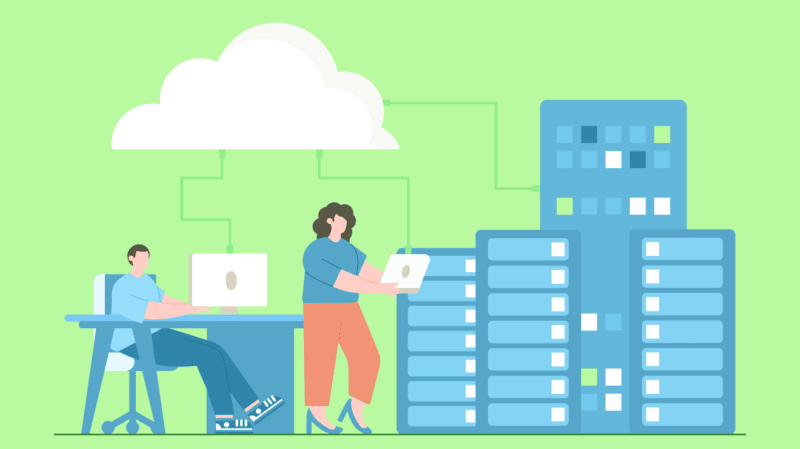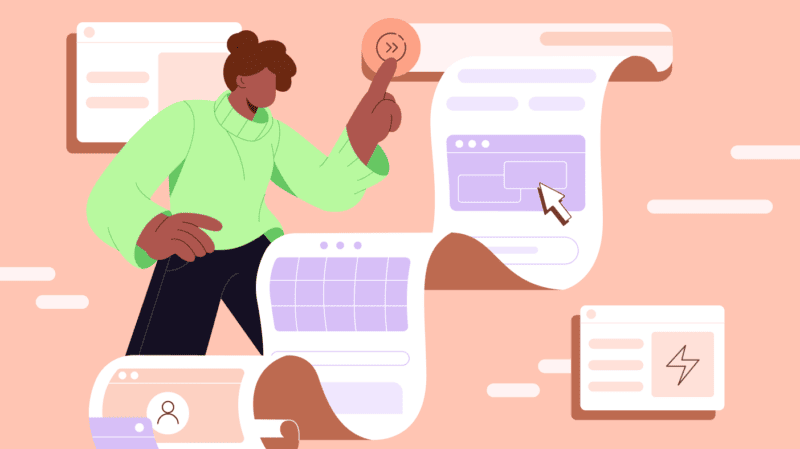CX in Action: Optimizing Customer Journey Orchestration

The CX in Action blog series is designed to help you upgrade your customer experience strategy with examples from leading enterprise brands. This post covers how to optimize customer journey orchestration.
Customer experience isn’t a single event, it’s every interaction with your brand throughout the customer journey — across different channels, touchpoints and stages of the customer lifecycle. Customer journey orchestration is what allows you to take control and guide customers from brand awareness to long-term customer loyalty and retention.
Building coordinated, multi-step journeys that lead your customers from acquisition to retention — and that account for a multitude of behaviors, preferences and needs along the way — may sound like a tall order. But creating personalized, cross-channel journeys for your customers doesn’t require a crystal ball — it demands data.
Customer journeys don’t follow a straight line — they zig and zag as consumers interact with your brand across different channels and touchpoints. But with the right audience segmentation and analysis in place, you can develop and launch customer journeys tailored to specific audiences and where they are in their relationship with your brand, all while delivering consistent, relevant experiences no matter which step they take next.
Driving results across the entire customer lifecycle means creating omnichannel customer journeys, customizing journeys for different audiences and use cases and measuring and improving journey performance.
Read on to see how leading enterprise brands do just that to optimize customer journey orchestration.
Hear how Pandora Media performs customer experience journey management in the video below:
CX in Action: Optimizing Customer Journey Orchestration
Creating Omnichannel Customer Journeys
Modern customers are everywhere, so brands must be, too.
Through omnichannel orchestration — AKA by orchestrating customer journeys across all your channels and optimizing for each channel in real time — you can provide a consistent, cohesive experience no matter how customers want to interact with your brand, be it online or offline.
Cosmetics retailer e.l.f. Beauty understands the importance of giving customers the freedom to engage with brands on their channel of choice — and easily switch channels without losing continuity.
“A huge value driver … is just the ability to create these multi-channel customer journeys,” said e.l.f. Beauty’s Director of Global CRM & Customer Growth Brigitte Barron. “I think traditionally in the past a lot of [customer relationship management] campaigns lived in a silo through email or another channel.”
To seamlessly serve up the right messaging in the right place, organizations need the ability to not only plan out customer journeys in advance and schedule customer experiences, but also quickly pivot and adjust based on the wants and needs of their customers.
This way, they can optimize journeys based on consumer preferences and which channels drive the best results, something grocery retailer Albertsons Companies does to boost brand loyalty.
“It basically gives our loyalty and marketing business teams an insight-driven journey approach … to retarget customers in alternate channels, such as push, SMS or paid media,” said Albertsons Companies’ Director of Marketing & Advertising Platforms Sankett Deshpande.
The result? The chance to stay top of mind and strengthen customer relationships no matter how or where the opportunity arises.
“We are truly enabling omnichannel personalization capabilities across the user journey where the users are,” Deshpande said.
Learn how e.l.f. Beauty develops journeys for multiple channels in the video below:
Customizing User Journeys for Different Audiences and Use Cases
Every customer has a different want and need in mind. it pays to pay attention and tailor customer journeys accordingly.
To avoid one-size-fits-all customer experiences — and make sure those experiences are suited to where audiences are in the customer lifecycle — organizations must be able to create as many sophisticated, multi-step journeys as are required to suit their customers’ unique behaviors and preferences.
This requires the ability to create and launch an unlimited number of audiences to an unlimited number of channels while controlling for timing, cadence and frequency.
For example, you may want to build journeys to welcome new customers. After it switched to a subscription-based business model, software company Autodesk did so to improve customer onboarding in an effort to boost the lifetime value of the customer.
“We wanted to ensure that customers would adopt the product early on to keep retention and renewal rates high,” said Autodesk’s Senior Director of Enterprise Engagement Tzvetana Duffy.
Autodesk started by making sure its customer journey orchestration solution could “integrate quickly and easily with many different systems in our stack,” according to Duffy. From there, it began creating onboarding journeys that accounted for where customers were in the adoption cycle.
“The ability to analyze and act on this information is the competitive differentiator for companies in a subscription-based world,” Duffy said.
At the same time, you may also want to launch journeys designed to win back lost customers, similar to mass media company Condé Nast.
“One of our first use cases when we started … was to launch a win-back campaign,” said Condé Nast’s Associate Director of CRM & Engagement Liz Switzer. “We didn’t have any campaigns that targeted in an automated way based on our customer data. So before … the segment of subscribers who had previously lost or canceled their subscription — we weren’t able to target them on site, on paid or send them automated emails.”
By managing the different customer journey stages in this way and building journeys tailored to one specific audience and use case, Condé Nast succeeded in recovering lost business.
“We were able to generate a 95% lift in the conversion rate for the overall segment,” Switzer said.
See how Autodesk drives revenue with customer journeys in the video below:
Measuring and Improving User Journey Performance
There’s no such thing as a finished customer journey — they should be augmented over time to better suit the changing needs of your customers.
By testing different variations of customer journeys — such as through A/B testing and control groups — and reporting on the results, organizations can improve existing journeys and inform the creation of new ones.
This helps brands develop a more sophisticated strategy that will not only drive better results, but cut down on unnecessary, costly and time-consuming tactics. The upshot is both better omnichannel marketing performance and increased marketing efficiency.
“[R]ather than blasting the customer with multiple emails within a week, we are now taking a methodical approach on what campaign should be activated for what customers based on what segments, and then how many campaigns the customer should receive in a given amount of time where they are within the customer journey,” Deshpande said.
Optimizing customer journey orchestration opens the door to not just better customer experiences, but stronger and longer-lasting customer relationships. It allows businesses to move from reactive to proactive, making sure they’re providing the right engagement for every customer.
Keep in mind that whatever customer journey orchestration solution you rely on, it should give you the speed, flexibility and sophistication you need to not just manage customer journeys, but expand and enhance them to continue exceeding customer expectations.
Learn More About Optimizing Customer Journey Orchestration
Get in touch with our experts to discover how you can optimize journey orchestration using the AIQ CX Hub.




